Varanadi Kashayam Uses and Benefits for a Powerful Natural Wellness Boost
Every wellness journey has a turning point. For many in India, it arrives with a warm cup of kashayam at dawn. They feel heavy, slow, and tired before the day starts.
In those quiet moments, they turn to varanadi kashayam. It’s not just a trend but a trusted ally from ayurveda. It has helped families for generations.
They seek lightness, clear breath, and calm focus. They want real change, not quick fixes. Varanadi Kashayam is key for easing Kapha heaviness and supporting metabolism.
Many first learn about it in Ashtanga Hridaya. Then, they find bottles from AVS Kottakkal, AVP Coimbatore, and others. These bottles are found on neighborhood shelves.
The benefits of varanadi kashayam are well-known. It dries excess, clears channels, and kindles Agni. People use it for weight, fatty liver, edema, and sinus pressure.
It also supports cholesterol and atherosclerosis. Used wisely, it fits daily routines and honors ayurvedic practice.
But, careful use is important. Those with strong Pitta, gastritis, or ulcers need caution. The goal is steady progress, not strain.
When taken with warm water and simple food, it can feel like a reset. It’s subtle at first, then clear.
Key Takeaways
- Varanadi Kashayam Uses center on Kapha- and Vata-related concerns like heaviness, congestion, and sluggish digestion.
- This kashayam from ayurveda is traditionally linked to better metabolism, edema relief, and support for fatty liver and cholesterol.
- Brands in India such as AVS Kottakkal, AVP Coimbatore, Vaidyaratnam Oushadhasala, and Oushadhi offer trusted options.
- Reported actions include channel clearing, Agni enhancement, and Kapha-Medohara effects for central obesity.
- Use mindfully; those with strong Pitta, gastritis, or ulcers should seek medical advice before starting.
- For best results, pair varanadi kashayam with warm water, light meals, and consistent daily habits.
What Is Varanadi Kashayam? Ayurvedic Formulation and Core Benefits
Varanadi kashayam comes from Kerala’s ancient traditions. It’s a special ayurvedic drink that helps clear blocked channels. It also eases Kapha–Vata problems.
This drink is made from 16 herbs. You can find it as syrup or tablets from Kottakkal Arya Vaidya Sala and Vaidyaratnam. It’s meant to boost energy and reduce heaviness.
Varanadi kashayam benefits include helping with obesity, edema, and breathing issues. It also relieves dull headaches and stiffness. It’s a mix of herbs that helps move waste and opens up channels.
An ayurvedic doctor might suggest it for Kapha and Vata problems. These issues can slow down metabolism and circulation.
Ayurvedic overview: Kapha-Vata balancing decoction
It’s known for drying excess fluids and breaking stagnation. Varanadi kashayam is chosen when channels are blocked, breathing is hard, or limbs are stiff. It helps clear waste and keeps Vata in balance.
How it supports digestion, metabolism, and energy
This drink boosts digestive fire and helps you feel hungry at the right time. It improves how your body absorbs nutrients. This can help with handling fats and reduce bloating.
People often feel more energy after eating. This is because it supports Agni and keeps Pitta balanced.
Reported to have antioxidant and anti-inflammatory properties
Many herbs in this blend have antioxidant and anti-inflammatory effects. Herbs like Asparagus racemosus and Plumbago zeylanica are known for these benefits. They help fight oxidative stress and inflammation, as guided by an ayurvedic doctor.
| Core Aspect | Traditional Focus | Key Herbs Referenced | Practical Takeaway |
| Dosha Balance | Kapha–Vata regulation, Medohara action | Crataeva nurvala, Premna integrifolia | Helps clear damp heaviness and supports mobility |
| Digestive Fire | Agni rekindling, improved metabolism | Plumbago zeylanica, Terminalia chebula | Promotes appetite, reduces sluggish digestion |
| Inflammation & Oxidation | Low-grade inflammation moderation | Asparagus racemosus, Semecarpus anacardium | Antioxidant support for tissues and channels |
| Usage Context | Obesity, edema, congestion, stiffness | Synergistic polyherbal formulation | Best used as advised by an ayurvedic practitioner |
Varanadi Kashayam Uses
In India, doctors use varanadi kashayam to fight Kapha and slow digestion. It’s great for respiratory problems and water retention. It helps when energy is low and channels are blocked.
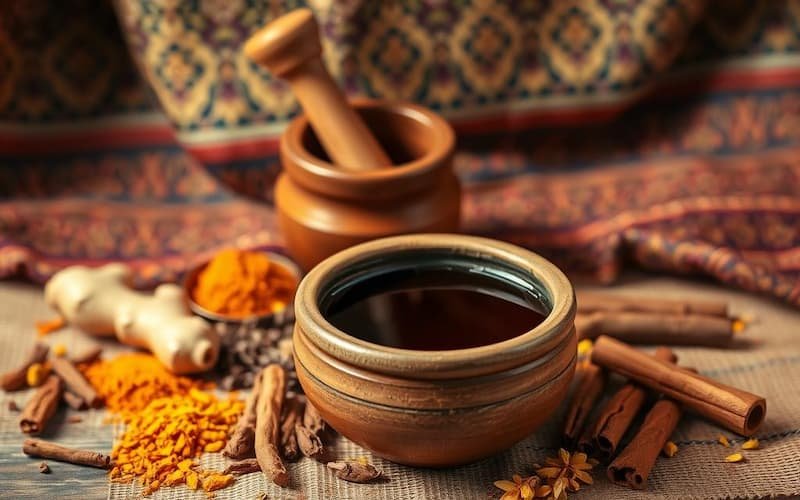
Kapha-related disorders: obesity, edema, congestion
It helps with obesity, edema, and congestion. It moves fluids and clears mucus. It’s good for breathlessness and Kapha diseases.
Head ailments: sinusitis, dull headaches, nasal polyps, ear issues
It relieves sinusitis, headaches, and nasal polyps. It’s also good for ear infections. These problems are common in Kapha head issues.
Metabolic support: indigestion, low appetite, bloating, sluggish digestion
It boosts appetite and clears gas. It helps with bloating and slow digestion. It’s great for Kapha-Vata fatigue and sleepiness.
Tissue-level benefits: internal/external abscesses, swelling, stiffness
It works on tissues, like abscesses and swelling. It’s good for eczema, wounds, and joint pain. It draws out moisture and opens channels.
| Clinical Focus | Presentation | Relevant Varanadi Kashayam Uses | Kapha Context |
| Metabolic and Weight | Central fat, heaviness, fatigue | Adjunct in treatment of obesity; appetite reset; lighter post-meal feel | Varanadi kashayam for kapha imbalance with slow metabolism |
| Fluid and Swelling | Edema of legs, puffy face | Moves retained fluids; reduces edema and limb tightness | Moist Kapha excess; channel clogging |
| Respiratory | Chest congestion, thick sputum, breathlessness | Clears respiratory kapha; eases congestion and load on breathing | Kapha overgrowth in airways |
| Head and ENT | Sinusitis, dull headaches, nasal polyps, ear infections | Dries secretions; relieves pressure and heaviness | Kapha-dominant head disease patterns |
| Gastrointestinal | Low appetite, bloating, belching | Kindles Agni; cuts sluggish digestion | Kapha-Vata digestive drag |
| Tissue-Level | Abscesses, swelling, stiffness of hips and legs | Liquefies waste; supports drainage and flexibility | Dense Kapha with fluid retention |
Varanadi Kashayam Benefits: Metabolism, Weight, and Inflammation
Varanadi kashayam helps boost digestive health and energy. It improves metabolism and helps with weight and inflammation. These benefits match traditional Kapha-Meda balancing in India.
Helps improve digestive fire and correct metabolism
The decoction boosts Agni, making digestion easier. It reduces gas and helps food move better. This supports metabolism and can make you feel lighter.
Anti-obesity action for central obesity and belly fat
It helps with stubborn belly fat and waist size. It dries out excess Kapha and Meda. This reduces girth and supports exercise and yoga.
Anti-inflammatory effects and edema reduction
Herbs in the decoction soothe and dry tissues. This reduces swelling and fluid retention. It calms joints and reduces morning puffiness.
Potential to lower cholesterol levels and support atherosclerosis management
The decoction is good for high cholesterol and triglycerides. Regular use and a light diet support atherosclerosis treatment. It helps keep blood vessels healthy and weight in check.
| Focus Area | Observed Effects | Lifestyle Pairing | Outcome Linked to Benefits |
| Digestive Agni | Improved appetite rhythm; lighter post-meal feel | Warm water, mindful chewing | Steadier metabolism and energy |
| Central Obesity | Reduced waist size and belly fat | Brisk walking, core-focused yoga | Better control of body weight |
| Inflammation & Edema | Less puffiness, easier joint movement | Low-salt meals, adequate sleep | Comfort with sustained activity |
| Lipids & Vessels | Support to lower cholesterol; calmer vascular tone | Fiber-rich diet, portion control | Adjunct for hyperlipidemia and atherosclerosis management |
Note: Everyone is different; diet and exercise help get the most benefits.
Varanadi Kashayam Ingredients List with Benefits
This ayurvedic mix uses 16 ingredients in equal parts. It’s valued for its diverse benefits and balanced actions. Each ingredient helps balance Kapha-Vata, aids metabolism, and supports fluid channels.
Note: In India, the names might vary, but the core ingredients stay the same as in traditional texts.
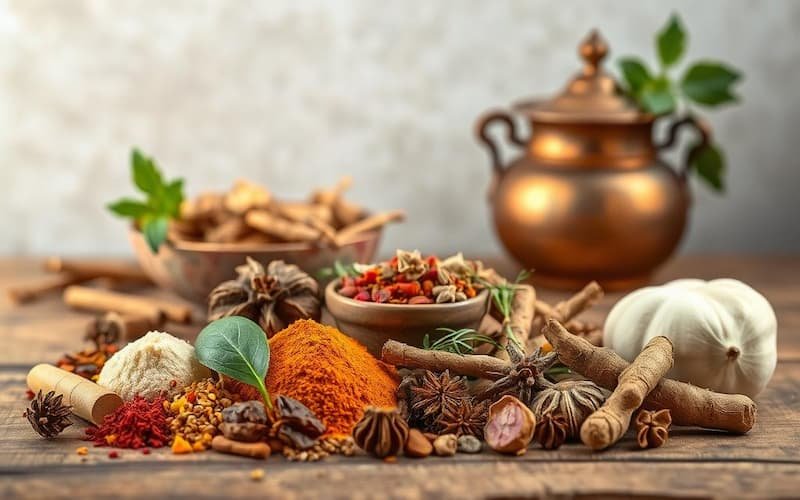
Crataeva nurvala (Varuna): diuretic, abdominal discomfort relief
Varuna helps with water retention and eases abdominal pain. It supports kidney health and reduces heaviness. It’s also used for flatulence and cramps.
Asparagus racemosus (Shatavari): anti-inflammatory, hepatoprotective
Shatavari soothes and protects the liver. It has antioxidants that protect tissues. It helps with digestion when there’s heat and acidity.
Plumbago zeylanica (Chitraka): digestive stimulant, anti-inflammatory
Chitraka boosts appetite and supports digestion. It clears sluggishness after big meals. Its anti-inflammatory properties are also beneficial.
Premna integrifolia (Agnimantha): anti-arthritic, analgesic
Agnimantha relieves joint pain and stiffness. It’s good for the heart and fights infections. It works well with Varuna and Chitraka for circulation and tissue health.
| Herb (Common Name) | Primary Actions | Notable Bioactive/Notes |
| Crataeva nurvala (Varuna) | Diuretic; relieves abdominal pain and flatulence | Supports renal health; aids digestion |
| Asparagus racemosus (Shatavari) | Anti-inflammatory; hepatoprotective; antioxidant | Saponins that modulate immunity and oxidative stress |
| Plumbago zeylanica (Chitraka) | Digestive stimulant; increases appetite; anti-inflammatory | Promotes Agni; reduces gut sluggishness |
| Premna integrifolia (Agnimantha) | Anti-arthritic; analgesic; antimicrobial | Neuroprotective and cardioprotective mentions in literature |
| Strobilanthes (Sairyaka) | Addresses edema and certain neurological issues | Traditionally grouped within Varanadi references |
| Marsdenia tenacissima (Morata) | Anti-diabetic; anti-inflammatory | Used for metabolic balance |
| Aegle marmelos (Bilwa) | Anti-inflammatory; anti-diarrheal | Supports gut integrity |
| Aristolochia bracteolata (Vishanika) | Anthelmintic | Applied in parasite management |
| Solanum indicum (Brihati) | Antioxidant; anti-asthmatic | Respiratory support |
| Solanum xanthocarpum (Kantakari) | Hepatoprotective; expectorant | Clears phlegm and congestion |
| Pongamia glabra (Karanja) | Anti-inflammatory; anti-diabetic | Kapha-balancing aid |
| Holoptelea integrifolia (Pootikaranja) | Anthelmintic; wound-healing | Skin and gut applications |
| Terminalia chebula (Haritaki) | Rasayana; antimicrobial; antioxidant | Supports regular elimination |
| Moringa oleifera | Nutrient-dense; anti-inflammatory | Vitamins, minerals, and polyphenols |
| Desmostachya bipinnata (Darbha) | Coolant; genitourinary support | Soothes urinary tract |
| Semecarpus anacardium (Rujakara) | Anti-atherogenic; antioxidant | Traditionally used for lipid balance |
These 16 ingredients form a trusted mix for Kapha-related issues. Their combined benefits support the varanadi kashayam ingredients list. Each ingredient plays a specific role in this traditional ayurvedic formula.
How It Works: Possible Mechanism of Action and Anti-Inflammatory Properties
Varanadi Kashayam works in two ways. It follows ancient Kapha-Medohara principles and also fits into modern inflammation biology. It balances digestion, modulates the immune system, and affects fluid balance.
Kapha-Medohara action: liquefying and clearing channel obstructions
Ayurvedic texts say this decoction helps liquefy thickened wastes. It clears srotorodha, or channel obstructions. This helps with edema, chest congestion, and fat.
It improves fluid turnover and makes metabolic channels clean.
Enhancing Agni: digestion, absorption, and metabolism
This blend supports Agni, the digestive fire. It helps with digestion and absorption. Users say they feel lighter and have less bloating.
Over time, appetite and metabolism may improve. This shows how it helps with weight and energy balance.
Anti-inflammatory pathways: effect on low-grade inflammation
The formula has herbs with anti-inflammatory properties. Modern studies look at their effect on inflammation in blood vessels and fat. They consider antioxidants, lipid handling, and blood flow.
Discussion points: expression of proinflammatory cytokines (TNF-α, IL-1β, IL-6)
Research asks if this decoction can change proinflammatory cytokines. Studies use thp-1-derived macrophages to measure cytokines during LPS challenges. They look at gene expression changes.
While there are broad claims, specific data on this blend’s cytokine effect is needed.
Weight Management: Varanadi Kashayam for Weight Loss and Belly Fat
In India, people use this ancient formula to lose weight and target belly fat. It helps reduce excess Kapha and boosts metabolism naturally. This aligns with traditional obesity treatment.
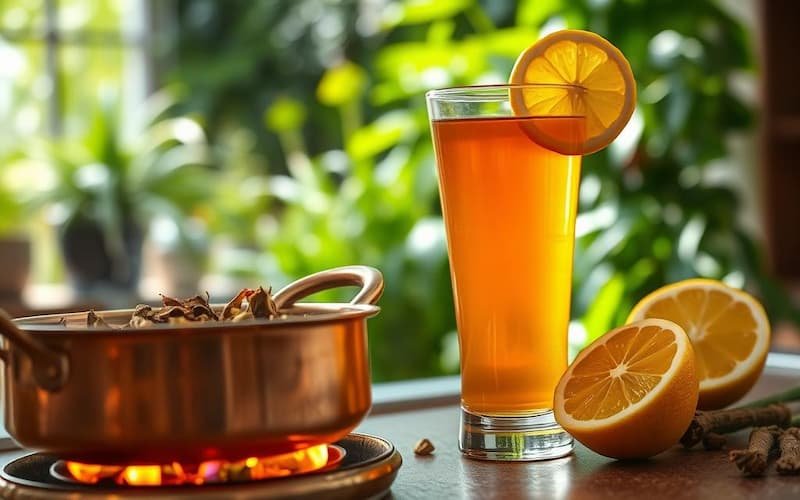
How Varanadi Kashayam reduces belly fat naturally
Doctors say varanadi kashayam helps burn belly fat by boosting digestive fire. It improves how nutrients are absorbed. This leads to fat loss from body fat over time.
As metabolism increases, some feel hungrier at first. But this hunger goes away as weight starts to drop.
Central obesity, adipose tissue metabolism, and anti-lipase angles
This formula is used to fight central obesity by breaking down fat in the liver and body fat. While there’s little direct proof, its actions are believed to help with fat breakdown. This focus on belly fat is seen as a key step in fighting obesity.
Role in obesity-related breathlessness and exercise tolerance
Reducing Kapha and belly fat can ease breathing problems. As belly size goes down, exercise feels easier. This can improve walking speed and time.
Starting slow helps avoid getting tired and supports steady progress.
Complementary yogasanas and lifestyle for better outcomes
Adding simple practices can enhance the effects of varanadi kashayam. Many start with Nadi Shuddhi to calm breathing. Then, they add Bhujangasana and Pavanamuktasana for core strength and digestion.
They also eat light meals, take short walks, and do lung and heart exercises safely.
Liver and Heart Health: Fatty Liver, Hyperlipidemia, and Atherosclerosis
The liver is key to balancing fats, and the heart needs clear paths for blood. Ayurveda suggests Varanadi Kashayam helps clean up fats and keeps the heart strong.
Varanadi Kashayam fatty liver remedy and hepatic function support
This decoction is known to help with fatty liver. It improves bile flow and gut movement. This helps the liver handle fats better, which can reduce fat buildup.
Varanadi Kashayam to lower cholesterol levels
This formula helps lower cholesterol and triglycerides. It focuses on digestion to break down fats efficiently. People often feel lighter after meals and have more energy.
Varanadi Kashayam atherosclerosis treatment considerations
For atherosclerosis, it helps with vessel comfort and blood flow. Its Kapha-clearing properties are said to reduce plaque and inflammation. It’s part of a plan that includes exercise and regular check-ups.
Synergy with light diet and Kapha-pacifying routines
- Eat warm, light meals like moong dal soups and steamed veggies. Use spices like cumin and ginger.
- Avoid heavy, cold, or oily foods, junk, and carbonated drinks. Also, stay away from curd.
- Have regular meals and sleep. Protect from cold, wind, and dust. Stay active with walking and gentle breathing.
Using varanadi kashayam with a light diet and daily routine helps manage fats and cholesterol. It supports the liver and keeps metabolism steady.
Dosage, Recipe, and Safe Use: Decoction, Tablet, and Practical Guidance
In India, clear steps are key for everyday users. This section gives practical guidance. It helps you make a reliable herbal decoction, choose a varanadi kashayam tablet or kwath when short on time, and align timing with light meals for steady results.
Traditional decoction method: herbal decoction recipe and ratios
The classic recipe starts with equal parts of 16 herbs. They are washed, dried in the shade, and crushed. Mix them in an earthen or steel pot with 16 parts water.
Boil on a low flame in an open vessel, stirring often, until it reduces to one-eighth. Strain through a clean cloth and serve warm. This decoction is the core varanadi kashayam recipe for digestion and metabolism, valued for its clear taste and quick uptake. In classical terms, the dosage equals two pala, taken after the prior meal has digested well.
Readymade forms: Varanadi kashayam tablet/kwath dosage guidelines
When time is short, users choose readymade options. Kwath may be taken at 20–40 ml before meals, or 10–20 ml if labeled as syrup, always diluted in warm water. A varanadi kashayam tablet is typically 1–2 tablets with warm water about an hour before meals.
Clinicians often personalize dosage. Many follow a cautious start, considering varanadi kashayam dosage for fatty liver disease or weight goals, and then adjust by response.
Timing and anupana: warm water, empty stomach usage
Taking the decoction on an empty stomach or 30–60 minutes before meals improves bioavailability. Warm water acts as a gentle anupana and supports Kapha balance. This timing also helps the recipe work with the body’s daily rhythm.
Users who stay consistent report steadier appetite cues and better comfort after meals. The same timing applies to kwath and tablets, unless a practitioner advises differently.
Diet and behavior: light meals, spices, avoiding cold and heavy foods
Diet amplifies the formula. Favor warm, freshly cooked foods and simple combinations. Use digestive spices like cumin, ginger, black pepper, and ajwain. Avoid heavy, junk, and refrigerated foods; limit milk and skip curd to ease Kapha.
Daily movement helps. Gentle exercise and guided yoga—such as Nadi Shuddhi, Bhujangasana, and Pavanamuktasana—can support metabolism while the decoction or kwath does its work.
| Form | Preparation/Use | Suggested Dosage | Timing | Notes |
| Classical decoction | Equal parts herbs, 16× water, reduce to 1/8, strain | Approx. two pala equivalent, served warm | Empty stomach or 30–60 min before meals | Core varanadi kashayam recipe for digestion and metabolism |
| Kwath | Ready brew, dilute in warm water | 20–40 ml before meals | Preferably before breakfast and dinner | Common clinical choice; adjust dosage by response |
| Syrup (kwath label) | Measure and mix with warm water | 10–20 ml before meals | 30 minutes pre-meal | Gentler start for sensitive digestion |
| Varanadi kashayam tablet | Swallow with warm water | 1–2 tablets per dose | About 1 hour before meals | Portable; useful for travel or workdays |
| Diet and behavior | Warm, light meals; spices like cumin, ginger, black pepper, ajwain | — | At regular meal times | Avoid heavy, cold, carbonated foods; limit milk, avoid curd |
| Special case: fatty liver focus | Use decoction or kwath with close monitoring | Personalized varanadi kashayam dosage for fatty liver disease | Before meals with warm water | Combine with practical guidance on diet and activity |
Varanadi Kashayam Side Effects, Contraindications, and When to Avoid
Most people do well with this decoction, thanks to Ayurvedic guidance. But, it’s not without risks. Too much can lead to dry mouth, heartburn, and mouth ulcers. Some might feel very thirsty or lose their appetite, mainly if taken without food.
Those with a Pitta tendency or heat disorders should be careful. It might cause stomach pain or burning for those with gastritis or ulcers. Avoid it if you have a peptic ulcer, heartburn, or severe acidity before.
This formula can make you feel hotter, which is bad in warm weather. It’s also not good with spicy foods or late at night. Drinking water and eating light meals can help with digestion.
There’s not much research on how it affects cytokines. Sources don’t show it’s safe for inflammation. So, it’s best to use it carefully and for a short time, if you have health issues or a sensitive stomach.
Always get advice from a licensed Ayurveda doctor. Tell them about any medicines you’re taking, like antacids or NSAIDs, because they can cause stomach problems too.
| Concern | Typical Presentation | Risk Context | Action Point |
| Gastritis flare | Burning, nausea, early satiety | High dose, empty stomach, spicy meals | Reduce dose, take after light food, consider cooling anupana |
| Ulcer aggravation | Sharp epigastric pain, black stools | Known ulcer, concurrent NSAIDs | Stop use; seek medical review immediately |
| Heat disorders | Thirst, flushing, acidity | Summer months, Pitta prakriti | Short course, cooling diet, monitor response |
| Mouth ulcers | Painful oral sores, dry mouth | Prolonged unsupervised use | Pause, increase hydration, assess dose with clinician |
| Heartburn | Chest burn, sour belching | Late-night dosing, heavy meals | Shift to morning/afternoon, smaller meals, review timing |
| Unclear cytokine effects | No defined signal in lps-induced models | Data gap in human trials | Use clinical judgment; avoid in unstable inflammatory states |
- Who should use caution: those with gastritis, ulcer history, or sensitive digestion.
- Primary contraindications: active peptic ulcer, recurrent severe acidity, ongoing heat disorders.
- When to avoid: peak summer, simultaneous heating medicines, or during acute gastric flares.
FAQs
Benefits of Varanadi Kashayam in Ayurveda
What is Varanadi Kashayam?
Varanadi Kashayam is an ayurvedic polyherbal formulation known for its various health benefits. It is primarily used to treat conditions like rheumatoid arthritis, digestive issues, and other inflammatory diseases. This herbal decoction is made from a combination of 16 ingredients, each contributing to its therapeutic properties.
What are the primary benefits of Varanadi Kashayam?
The benefits of Varanadi Kashayam include its anti-inflammatory effects, which help reduce symptoms of rheumatoid arthritis and other inflammatory conditions. Additionally, it aids in digestion, improves liver function, and supports metabolic health, making it the most versatile remedy among several powerful Ayurvedic remedies for digestive health available in India.
How does Varanadi Kashayam affect weight loss?
Varanadi Kashayam is reported to help in the treatment of obesity by promoting metabolism and aiding digestion. The formulation helps reduce body weight and fat accumulation, making it beneficial for those struggling with obesity or metabolic disorders.
What is the recommended dosage of Varanadi Kashayam?
The dosage of Varanadi Kashayam may vary depending on individual health conditions. It is best to consult an ayurvedic practitioner for personalized recommendations. Typically, the kashayam is taken in small quantities, usually diluted with water, before meals to enhance absorption.
Can Varanadi Kashayam help with insulin resistance?
Yes, Varanadi Kashayam is known to have anti-diabetic properties, which can aid in managing insulin resistance and type 2 diabetes. Its bioactive ingredients help regulate blood sugar levels and improve metabolic function.
What are the ingredients of Varanadi Kashayam?
Varanadi Kashayam is composed of 16 potent ingredients, including herbs that are traditionally used in Ayurveda for their anti-inflammatory, antioxidant, and digestive properties. These ingredients work synergistically to enhance the overall efficacy of the formulation.
Are there any side effects of using Varanadi Kashayam?
While Varanadi Kashayam is generally considered safe, some individuals may experience mild side effects such as digestive discomfort or allergic reactions. It is advisable to consult with an ayurvedic practitioner before starting any new herbal treatment, especially if you have pre-existing health conditions.
How does Varanadi Kashayam help with skin diseases?
Varanadi Kashayam can be beneficial for skin diseases due to its anti-inflammatory and antioxidant properties. It helps in detoxifying the body and enhancing skin health, thereby potentially alleviating issues such as acne, eczema, and other skin conditions.
Is Varanadi Kashayam effective for hyperlipidaemia?
Yes, Varanadi Kashayam has been reported to help lower cholesterol levels and manage hyperlipidaemia. Its formulation aids in improving lipid metabolism and reducing high cholesterol, contributing to overall cardiovascular health.
Conclusion
Varanadi Kashayam is a well-known ayurvedic drink. It helps clear blockages and balances Vata. It boosts digestion and metabolism for weight control.
It uses Varuna, Shatavari, Chitraka, Agnimantha, Haritaki, and Moringa. These ingredients have many benefits. They help with obesity, fatty liver, and sinus problems in India.
It’s also good for heart health and treating arthritis. This shows its wide range of benefits. It helps with metabolism, weight, and inflammation.
It’s easy to use: drink it warm before meals. It’s part of a healthy routine. But, be careful and talk to an Ayurvedic doctor in India first.
Choose trusted brands like AVS Kottakkal and AVP Coimbatore. They ensure quality and results.
In short, Varanadi Kashayam is a natural solution. It improves digestion, metabolism, and fights inflammation. It helps with weight and heart health. With the right use, it’s a great choice for wellness in India.

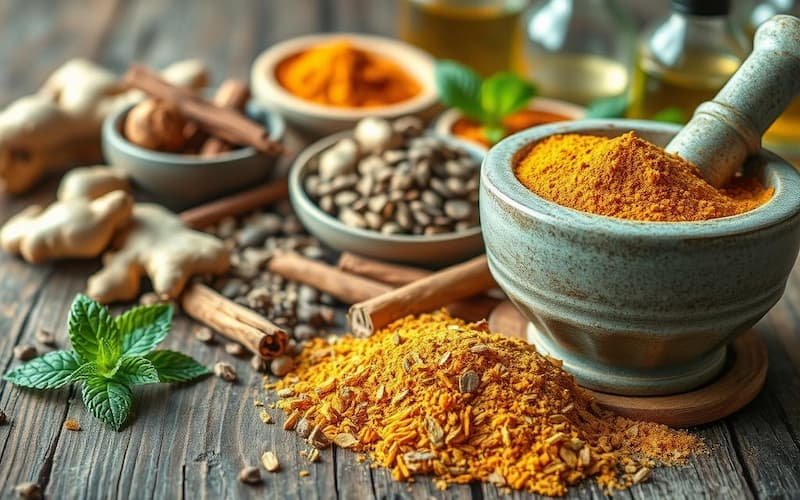

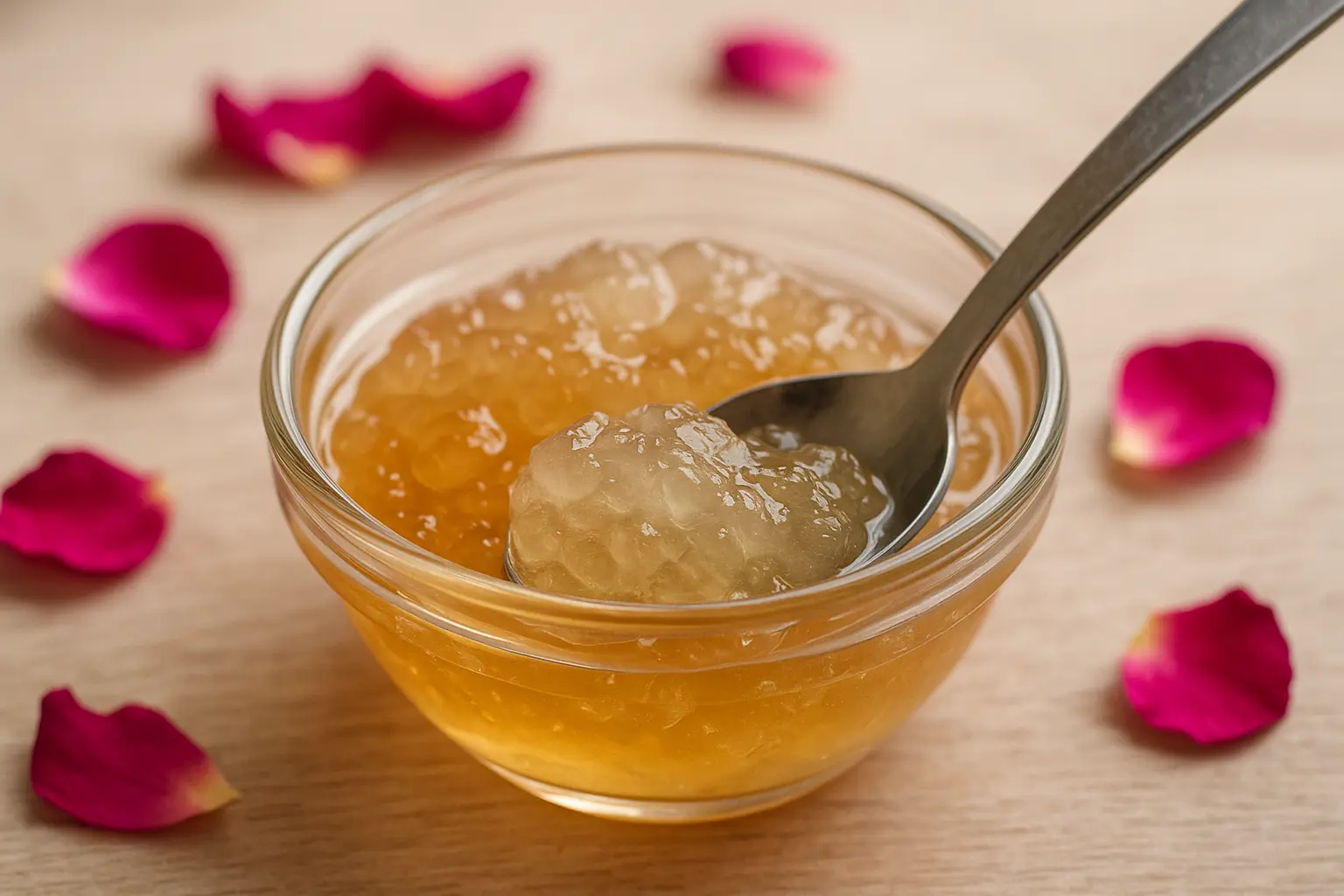
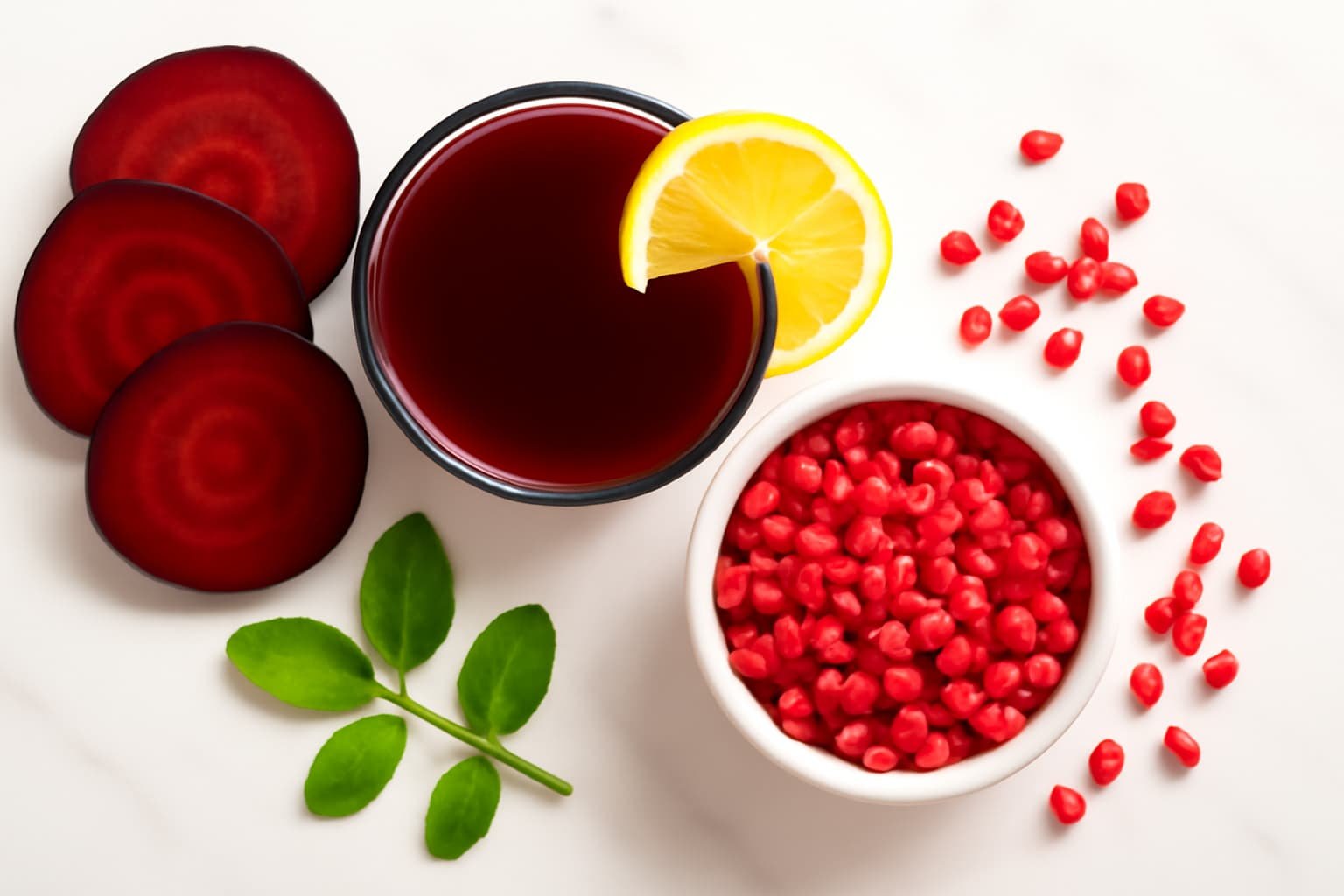

One thought on “Varanadi Kashayam Uses: Powerful Natural Wellness Boost”